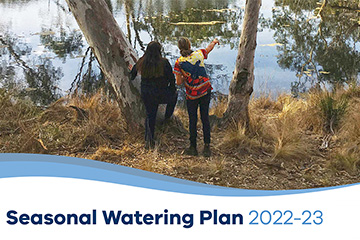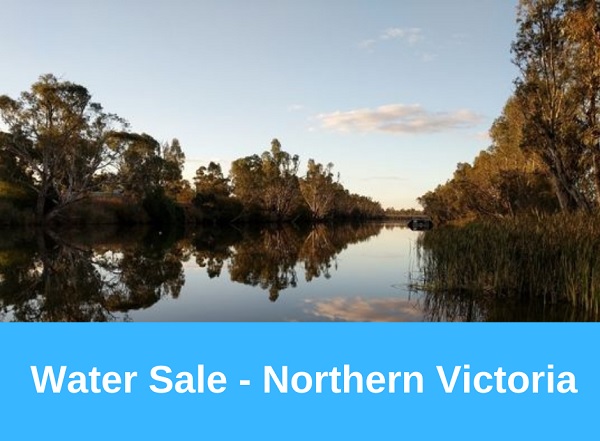Released - Seasonal Watering Plan 2022-23
04 July 2022
The Victorian Environmental Water Holder (VEWH) is pleased to announce that this year’s Seasonal Watering Plan 2022-23 for water for the environment has been released.

Seasonal Watering Plan 2022-23
Download the Victorian plan or regional sections.
Rivers and Wetlands
Browse the online seasonal watering plan for your region’s rivers and wetlands
This plan is designed to guide decisions on where and when water for the environment can be delivered to regulated rivers and wetlands across Victoria throughout the watering season (July 2022– June 2023).
Why we need water for the environment
Water for the environment helps to maintain and improve the health of rivers and wetlands, and all the plants and animals that depend on water.
Water for the environment is delivered from water storages as environmental flows which help to:
- improve water quality
- trigger natural cycles such as bird breeding, fish spawning and plant germination
- connect fractured waterways
- maintain waterway structure, and
- ensure life-support and safe habitat for native animals such as platypus, fish, turtles, and waterbirds.
Environmental flows are planned for 19 major river and wetland systems across Victoria, and will directly benefit over 100 species, many of which are threatened.
How the plan is developed
The plan is developed by the VEWH in close partnership with waterway managers - who engage extensively with their communities including Traditional Owners, storage managers, land managers, and scientists - to ensure a planning process that is informed by scientific understanding, local and cultural knowledge and on-ground evaluation.
This robust process helps instil greater confidence in our decision making, on how to make the most of every drop of water available for the environment for all likely climate scenarios, for the greatest environmental benefit.
Healthy waterways contribute to a healthy community. Planning for delivery of water for the environment also considers for where, when and how it can bring cultural, social, economic and recreational value to communities, as highlighted for each waterway system within the plan.?
How the VEWH will work with Traditional Owners
The VEWH acknowledges the important contribution Traditional Owners and Aboriginal knowledge systems make to the Victorian environmental watering program. We look forward to working with Traditional Owners on progressing their ability to have a say in how water for the environment is planned.
The VEWH, in partnership with Traditional Owners, the Department of Environment, Land, Water and Planning (DELWP) and our other program partners, will play our part to embed Traditional Owner influence and participation in the environmental watering program and support Traditional Owners on the path to accessing water and managing water on Country on their own terms.
Further Information
For further information please call
03 9637 8951 or email
general.enquiries@vewh.vic.gov.au.


